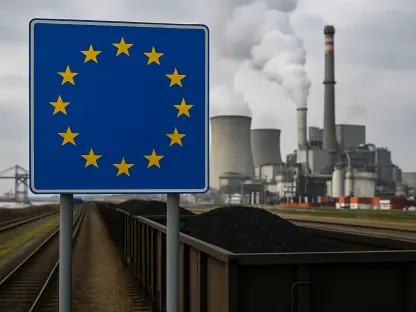California is making significant progress in environmental legislation with the introduction of Senate Bill 285, proposed by State Senator Josh Becker. This bill targets greenhouse gas (GHG) emissions disclosures, specifically enhancing the reporting of carbon dioxide removal (CDR) processes. As the state strives toward its 2045 carbon reduction goals, refining corporate data accountability is crucial for achieving these ambitious targets.
Strengthening Existing Legislation
Senate Bill 285 builds on the foundation laid by the Climate Corporate Data Accountability Act (SB 253). The latter mandates an annual public disclosure of GHG emissions from large entities operating in California. According to SB 253, companies with annual revenues exceeding $1 billion must disclose their scope 1, 2, and 3 emissions starting in 2026. By focusing on ensuring that the offsets counted against reported GHG emissions are qualified and meet specific criteria, SB 285 aims to refine this disclosure process, ensuring the authenticity and effectiveness of emission reduction efforts.
SB 285 adds a critical layer of specificity to how these emissions and offsets should be reported, further bolstering the integrity and accuracy of the data. The bill emphasizes the need for these offsets to genuinely contribute to reducing atmospheric carbon levels, aligning with California’s broader environmental goals. This emphasis ensures that the emissions reported lead to a concrete and measurable impact on climate change mitigation.
Defining Qualified Carbon Dioxide Removal
A core component of SB 285 is the precise definition of “qualified carbon dioxide removal.” The bill specifies stringent criteria for what can be considered qualified CDR, ensuring that the offsets used in reporting are legitimate. For instance, terrestrial biomass used in the CDR process must comprise agricultural residues, forestry residues, or municipal organic waste, ensuring sustainable sourcing. Additionally, the bill prohibits the use of CDR for enhanced oil recovery, marking a clear distinction from practices that do not align with California’s environmental goals.
This focus on stringent criteria ensures that offsets reported under SB 285 meet high standards for environmental accountability. The qualified CDR processes should significantly contribute to the reduction of atmospheric carbon dioxide, supporting California’s efforts to combat climate change effectively. By delineating these requirements, the bill ensures that CDR processes used for offset reporting are both sustainable and effective.
Community Protection Principles
Another critical aspect of SB 285 is its integration of community protection principles. This aligns with the principles established by California AB 905, emphasizing the need to minimize copollutant emissions from facilities employing carbon capture use and storage (CCUS) or CDR technologies. This is especially pertinent for low-income and disadvantaged communities that are often disproportionately affected by environmental pollution.
Additionally, the bill mandates measures to reduce water pollution and air pollution resulting from construction and transportation activities related to CDR. By prioritizing environmental justice, SB 285 ensures that the carbon reduction strategy incorporates public health goals, safeguarding vulnerable communities. This holistic approach underscores the importance of integrating community health and environmental goals seamlessly.
Matching Offset Durations with Emission Types
SB 285 introduces an innovative “like-for-like” offset matching principle, which is essential for making the carbon offset processes more effective. The bill stipulates that the storage duration of carbon sequestration must match the original storage form or the atmospheric lifetime of the emissions. For instance, carbon dioxide emissions derived from fossil fuels need to be counteracted with durable CDR methods that can provide long-term storage.
Similarly, emissions stemming from organic processes, such as soil or biological materials, can be offset by natural negative emissions with equivalent storage durations. This precision ensures short-lived climate pollutants and longer-term emissions are correctly addressed, enhancing the overall efficacy of the carbon offset system. By specifying these principles, SB 285 aims to create a robust framework for carbon reporting that relies on realistic and effective strategies for emissions reduction.
Enhanced Reporting Requirements
Under SB 285, entities reporting GHG emissions under the Climate Corporate Data Accountability Act would need to separate the quantities of GHG emissions and qualified CDR. Detailed descriptions of the types of emissions and removal processes used must be provided, ensuring greater transparency. This enhanced reporting aims to improve the accuracy of emissions reduction assessments, offering stakeholders a clearer understanding of the efficacy of reported offsets.
The bill’s delineation between emission types and removal processes provides a comprehensive picture of corporate environmental impact. By refining these reporting requirements, SB 285 supports California’s mission to achieve meaningful progress toward its carbon reduction goals. These efforts promote a culture of transparency and accountability in corporate environmental practices, encouraging more responsible behavior.
Legislative Journey and Broader Impact
California is making notable strides in environmental legislation with the introduction of Senate Bill 285, a proposal put forth by State Senator Josh Becker. This legislative measure is designed to address greenhouse gas (GHG) emissions disclosures, with a particular focus on improving the reporting of carbon dioxide removal (CDR) processes. The bill aligns with California’s ambitious objective of achieving significant carbon reduction by 2045. Enhancing the accuracy and accountability of corporate data is imperative for the state to meet these challenging environmental goals. By refining the mechanisms for tracking and reporting GHG emissions and CDR activities, Senate Bill 285 aims to ensure that companies are more transparent about their environmental impacts. This increased transparency is expected to facilitate better monitoring and regulation, thereby contributing to the state’s efforts to mitigate climate change effectively. Overall, the bill represents a critical step forward in California’s ongoing commitment to environmental protection and sustainability.









